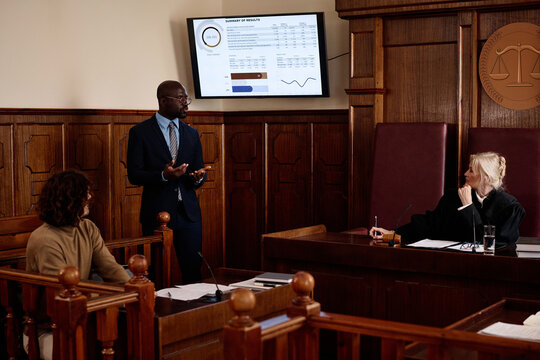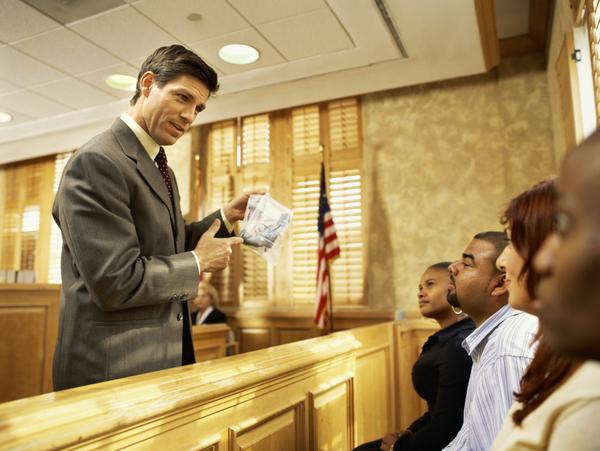Browsing Complex Cases: Just How to Establish Effective Trial Presentations for Optimum Outcomes
Browsing Complex Cases: Just How to Establish Effective Trial Presentations for Optimum Outcomes
Blog Article
Browsing the Intricacies of Test Presentations: Tips for Seamless Delivery and Compelling Disagreements
In the realm of legal procedures, the art of trial discussion stands as an important factor of success. As attorneys navigate the intricate web of courtroom dynamics, the capability to effortlessly deliver disagreements and proof while astounding the court's focus comes to be paramount. The complexities fundamental in trial discussions need a delicate balance of skill, technique, and skill. By developing techniques that ensure a polished delivery and crafting engaging disagreements that reverberate with the audience, lawful professionals can considerably enhance their advocacy. In a world where persuasion rules supreme, mastering the details of trial discussions is not just an alternative yet a need for those looking for to prevail in the courtroom.

Understanding Test Objectives
To successfully navigate a test, it is critical to have a clear understanding of the objectives that require to be achieved. Before entering the court room, lawful groups have to specify their goals and preferred outcomes. These purposes function as guiding principles throughout the test, forming approaches and influencing decision-making procedures.
Recognizing trial goals entails a thorough evaluation of the case, legal precedents, and the client's benefits. Trial Presentations. It needs a careful evaluation of the realities, identifying vital concerns, and anticipating prospective obstacles. By setting specific and measurable goals, lawyers can tailor their discussions and debates to straighten with the wanted results
In addition, a clear understanding of trial purposes enables lawful teams to focus on evidence, witnesses, and legal debates efficiently. It permits the growth of a systematic narrative that reverberates with the court and jury, reinforcing the overall case discussion.

Organizing Evidence Properly
Having a clear understanding of trial purposes lays the foundation for arranging proof efficiently in legal procedures - Trial Presentations. By aligning the discussion of evidence with the desired outcomes of the test, lawful teams can enhance their debates and boost their persuasiveness. One essential element of arranging proof is classification. Grouping evidence based upon styles or significance to specific lawful aspects can aid simplify the presentation and make intricate details more absorbable for the court or jury.
One more key component in organizing evidence effectively is developing a rational circulation. Presenting proof in a coherent and consecutive manner can help construct a compelling story that sustains the lawful arguments being made. Additionally, using visual aids such as timelines, graphes, or graphs can additionally enhance the company of proof and help in making clear complicated partnerships or sequences of events.
Furthermore, making sure that all proof offered is admissible and relevant to the situation is necessary. like this Inadmissible or irrelevant proof can take away from the strength of the argument and potentially damage the integrity of the here and now event. Consequently, a careful review and selection procedure must be carried out to include just one of the most legitimately sound and impactful evidence in the test presentation.
Crafting Influential Stories
Crafting compelling stories plays an essential duty in providing persuasive disagreements throughout legal proceedings. When creating a story for a trial presentation, it is crucial to establish a clear storyline that highlights crucial factors and links them in a systematic way. By weaving with each other evidence, testimony, and legal debates into a influential and natural story, lawful specialists can effectively support for their customers and enhance the probability of a favorable result in the court room.
Grasping Aesthetic Aids
Reliable use aesthetic help is essential to improving the influence and clarity of test presentations. Visual aids, when made use of strategically, have the power to streamline complex info, strengthen bottom lines, and leave a long lasting impact on the discretionary. To grasp aesthetic help in trial presentations, it is important to guarantee that they are clear, succinct, and appropriate to the arguments being made.
When incorporating aesthetic help, such as charts, pictures, graphs, or timelines, into a test presentation, it is important to keep them aesthetically appealing yet specialist. The visuals ought to match the verbal arguments, giving a visual representation of the info being talked about without overwhelming the audience with unneeded details.
Moreover, exercising with the visual aids beforehand is critical to ensure a seamless delivery during the test. Familiarizing oneself with the material, changes, and timings of each aesthetic help can help maintain the flow of the presentation and avoid technical glitches that may emerge.
Supplying Impactful Closing Debates
A compelling closing disagreement serves as the conclusion of a trial presentation, enveloping the core story and persuading the judge and court in the direction of a beneficial decision. To provide an impactful closing disagreement, it is critical to succinctly evaluate bottom lines, highlight the staminas of your case, and deal with any kind of weaknesses in a strategic way. Begin by describing the main arguments that support your client's setting, highlighting why the evidence presented throughout the test supports your story. It is vital to develop a feeling of cohesion and clarity, guiding the discretionary towards the wanted final thought.
Moreover, integrating emotional allure can even visit this site more reinforce your closing disagreement. Eventually, a well-crafted closing debate must leave a lasting impact, compelling the court and court to rule in your client's support.
Verdict
In verdict, mastering trial discussions entails understanding purposes, arranging evidence, crafting narratives, utilizing aesthetic help, and supplying impactful closing arguments. By implementing these strategies effectively, lawyers can provide their instance perfectly and make compelling debates in the court. It is critical to navigate the complexities of trial presentations with accuracy and skill to achieve success in lawful proceedings.
By aligning the presentation of proof with the preferred end results of the test, legal groups can reinforce their disagreements and boost their persuasiveness (Trial Presentations). To master aesthetic aids in trial you could try this out discussions, it is essential to make certain that they are clear, concise, and appropriate to the debates being made
A compelling closing argument offers as the end result of a test discussion, enveloping the core narrative and convincing the court and court in the direction of a desirable choice. Begin by describing the major debates that support your client's placement, stressing why the evidence provided throughout the test supports your narrative.In conclusion, mastering test discussions entails understanding goals, arranging evidence, crafting narratives, making use of aesthetic aids, and delivering impactful closing disagreements.
Report this page